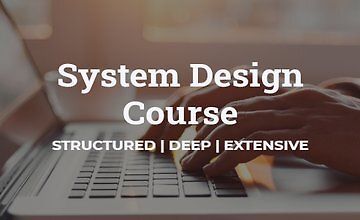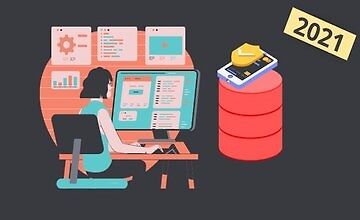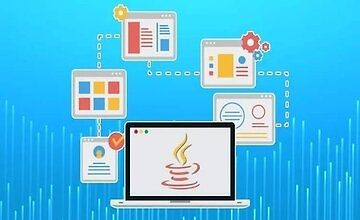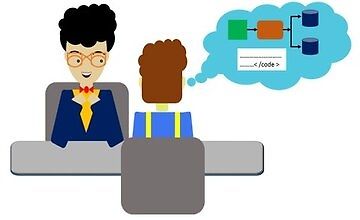
udemy
Udemy - одна из самых больших площадок в мире по доставке обучающего контента от разных авторов всего мира. Присутсвуют курсы практически на любую тему.
Preparing for the System Design Interviews V2 - End to End
Собеседования по проектированию систем очень распространены в крупных компаниях по разработке программного обеспечения. Они отличаются от интервью по программированию или структур данных и алгоритмов, но могут быть сложнее. Они требуют широкого набора знаний. Почти все ведущие компании, будь то google, amazon, uber, проводят один или два раунда собеседований по проектированию систем.
Этот курс поможет студентам подготовиться к собеседованию по проектированию систем.
Некоторые примеры вопросов для собеседования по проектированию систем:
1. Как бы вы подошли к разработке веб-сайта электронной коммерции в масштабе?
2. Как бы вы подошли к разработке веб-сайта электронной коммерции с использованием микросервисов, как вы будете обрабатывать транзакции?
3. Создайте приложение для чата, как любой известный мессенджер, который вы использовали?
4. Создайте функцию автозаполнения, такую как подсказки слов в поисковых системах. Масштабируйте ее до миллионов пользователей.
5. Как бы вы подошли к созданию ленты сообщений в социальной сети?
6. Как бы вы построили крупномасштабную серверную систему машинного обучения для создания видеорекомендаций, как на Netflix?
7. Как бы вы создали мобильное приложение, которое бы отслеживало ваше повседневное здоровье, режим тренировок и режим сна, а также давало бы вам рекомендации, основанные на записанной статистике?
8. Как бы вы построили свой собственный CDN?
Это пробный урок. Оформите подписку, чтобы получить доступ ко всем материалам курса. Премиум

Udemy - одна из самых больших площадок в мире по доставке обучающего контента от разных авторов всего мира. Присутсвуют курсы практически на любую тему.

В этом курсе вы получите глубокое понимание концепций проектирования систем. Полное руководство. Архитектурные схемы, планирование мощностей, Список API, тесты, Faq.

Слышали ли вы, что навыки проектирования систем необходимы разработчикам? Может быть, вы хотите изучить проектирование систем с нуля, но не нашли подходящего места для изучения. Или, возможно, вы разработчик, который хочет улучшить свои карьерные возможности, обладая навыками проектирования систем, которые являются одними из самых востребованных в отрасли.

Этот курс включает живые записи виртуальных собеседований от различных FAANG компаний и стартапов. Если вы пройдете курс, вы будете знать, какие вопросы задают, как справляться с давлением во время собеседования или как интервьюер повышает уровень сложности проблем.

По мере вашего роста как разработчика от вас все чаще будет требоваться умение выстраивать масштабируемые и оптимальные архитектуры для программных систем. Развитие этого навыка — отличный способ выделиться из массы других разработчиков. А еще интервью по System Design это обязательный этап собеседований в большие технологические компании. Его проходят при отборе как на инженерные позиции (Individual Contributor), так и на менеджерские (Eng

Системный дизайн или высокоуровневый системный дизайн. Почти все компании запрашивают проектирование различных систем в своих собеседованиях по проектированию систем. В основном раунд проектирования системы предназначен для опытных людей, но ведущие компании, такие как Google, Facebook, Microsoft, Amazon и т. д., стремятся предложить проекты даже новичкам. На проектирование системы отводится от одного до двух часов.